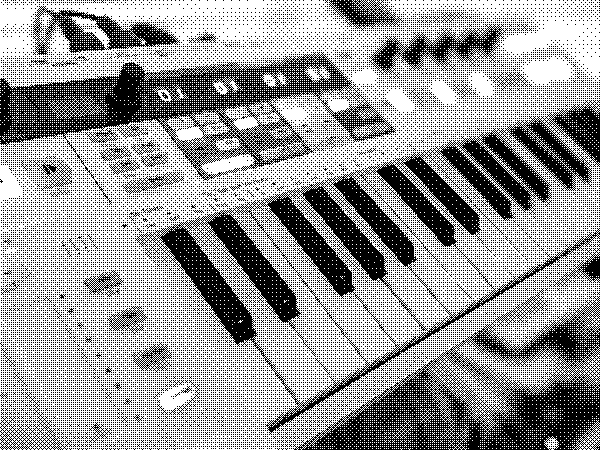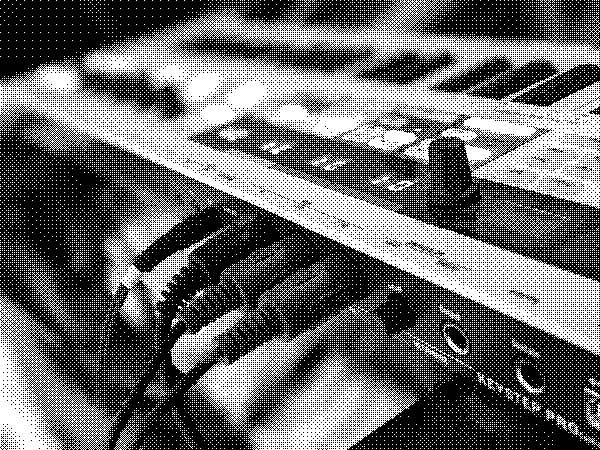KeyStep Pro
hardwareThe KeyStep Pro is the part of the monoid.run hardware setup that
ties everything together. It’s also the piece that inspired me to move
out of the box completely, more on that below.

What it is
At first glance the KeyStep Pro looks like a typical, small MIDI keyboard/controller combo. The downsized keys don’t feel particularly great to play however (although they could be worse), and I don’t think I ever used the MIDI CC mode to control anything—the main point for this device is the 4 track, polyphonic sequencer. It allows you to record live (quantized or unquantized) or to manually punch in a sequence step by step. Even editing a polyphonic sequence with a bunch of notes per step is pretty straightforward: hit a step to select it, the active notes in this step light up above the keys, hit one of the keys to select that note, and modify its parameters with the encoders (e.g. the velocity or gate length).
In general, the sequencer works in a similar way to the one on the Minibrute 2s, just times four. There are a bunch of options for step order, sequence length, swing, as well as operations like transposing the sequence or reordering the steps. The first track has a special drum mode that treats each key as a separate sequencer track, sort of. It allows a different sequence length per key, for example, which can create interesting polymeter effects.

The IO options for the KeyStep Pro are excellent. Apart from MIDI-over-USB, a DIN-MIDI input and two DIN-MIDI outputs it has CV pitch, gate and mod outputs (switchable between velocity, aftertouch and the mod wheel) for each of the tracks, eight CV gate outputs for the drum mode and analog sync/clock input and output. Oh, and there is even a metronome with a small speaker that I use far more often than I would have expected!
Why I got it
Originally I was shopping for a pure keyboard controller to work on my piano/keyboard skills, and interested in the Arturia KeyLab series (specifically the KeyLab 88). Instead, after watching some videos about the KeyStep Pro, I thought why learn to play better if I can just program my sequences? Well, that’s not really the reason, but after getting my feet wet with the sequencer on the Minibrute, a few more tracks to sequence instruments would be nice.
At that point the only instruments to sequence were software synths, so I didn’t really have the benefit of not having to set up stuff on the computer, but it was definitely more immediate than drawing notes with a mouse. I did also try controlling a Korg X5 (enjoy this review from 1995) that can actually provide multiple synthesizer tracks simultaneously, but programming it was pretty clunky, and the sound didn’t exactly blow me away. It did however serve as a proof-of-concept of running out of the box, or DAW-less as it’s commonly called—that is, without a computer and software to control the instruments.
What I use it for
Although I don’t use it to control the X5, the way I use the KeyStep Pro most of the time is still the same: To run multiple tracks to the Waldorf Blofeld’s multi mode. In addition to that, I run CV/gate and clock signals to the Minibrute, and MIDI to the Model:Cycles (only for clock sync) and the NTS-1. This means that everything is in sync (the Blofeld as well, for the arpeggiator and clocked delay), and I can use the sequencer tracks to play the Minibrute, NTS-1 and up to four different sounds on the Blofeld.
Similarly to the Minibrute 2s, the random sequence modes on the KeyStep Pro are really fun to play around with. In addition to random, where any of steps are chosen at equal probability, there is the walk mode which randomly chooses between playing the same step again, playing the next one, or the previous one. This is great to use on a track that has a sequence recorded (or programmed) that gradually moves across a range of notes, the walk mode then gives an unpredictable motion, but no weird sudden jumps.
Here’s an example where I did just that. One of the tracks (holding the bass notes) is playing in normal order, the other three use the walk pattern. All four play the same patch on the Blofeld, after a while the Minibrute 2s plays the bass track as well, and one of the other tracks additionally trigger the NTS-1.
After listening to the evolving atmosphere for a while, I had a drum groove in my head that I sequenced using the Model:Cycles. I’m pretty sure this will turn into a full song sometime soon, I love the overall vibe.
So again, this was a small teaser for what’s coming. Stay tuned for the next posts about the rest of the hardware!